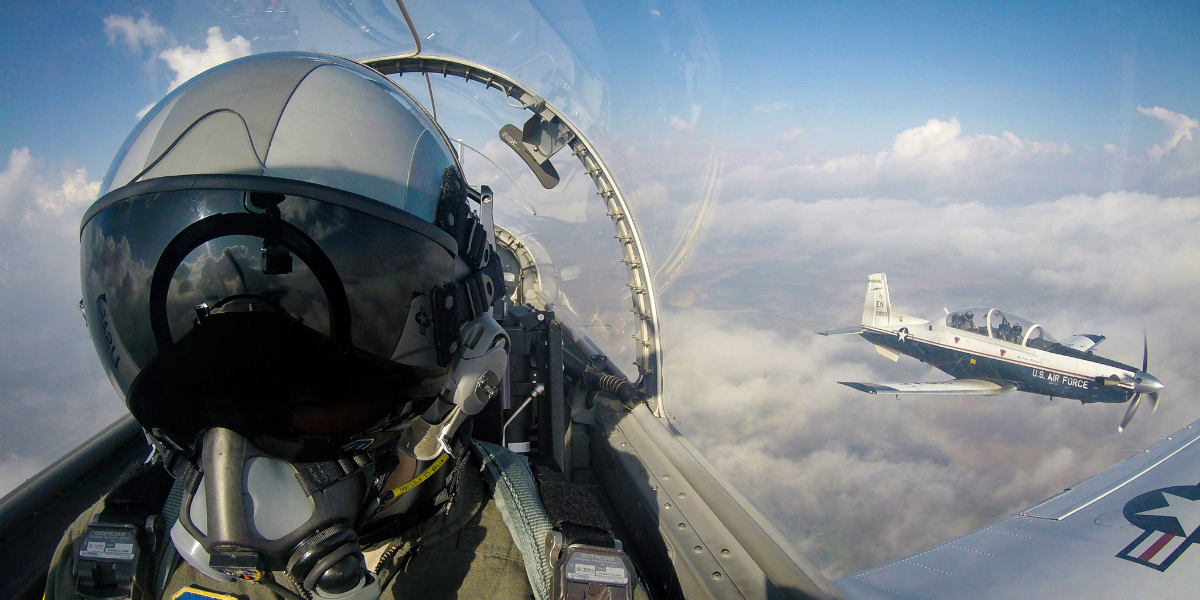Development of faster, more agile military aircraft is dependent on not only materials, fuel, and cost, it relies on pilots. Today, military aircraft force pilots to push their limits, constantly subjecting them to high G-forces, which can lead to hypoxia. Hypoxia occurs when the body does not get enough oxygen, causing symptoms that include unconsciousness, headaches, and tunnel vision.
A singular G-force is experienced constantly by every person near the surface of earth. This is because the acceleration due to gravity on earth is “G.” When a pilot enters an aerobatic maneuver in their aircraft the acceleration they experience is greater than what they would feel on the ground. If a pilot were to pull their aircraft upwards at a 70 degree angle, they would experience an acceleration 6 times that of gravity, “6-Gs”. The steeper the angle a pilot makes into their maneuver the greater the G forces will be.
When a pilot experiences elevated G-forces, blood is forced from the head down to the pilot’s lower half. The heart is not able to effectively pump the blood back towards the brain, depriving the brain of an efficient blood supply. In a study conducted by researchers from Trivandrum College, blood flow and wall shear stress, the force the blood puts on the walls of the blood vessels, was modeled using the Navier Stokes equation, a common fluid dynamics model that describes the motion of viscous fluids. Using this model, the researchers concluded that as G forces increase, wall shear stress and the constriction of blood vessels increase, making it harder for the heart to pump blood.
Several strategies exist for increasing tolerances to G forces. Pilots are taught positive pressure breathing techniques, go through G force training, and wear a suit referred to as a “G-suit.” A G-suit consists of bladders, inflatable air bags, that constrict a pilot’s legs and abdomen while in flight so that blood flow is restricted towards their lower extremities preventing blood from collecting. This allows for more blood flow to the brain and thus more oxygen for the brain to use.
Despite there being strategies to increase pilot tolerance to G forces, there are few scientific models that can accurately predict what G forces a pilot can endure prior to flight and thus pilots learn their limitations through trial by fire. However, in 2022 researchers created a model based on WCFI (walking cardiac force index) data for Air Force pilots that is based on daily cardiac monitoring. From this model, the researchers were able to estimate the G-tolerance of each pilot.
Jet pilots must put their aircraft into these maneuvers during dogfighting and in order to evade incoming missiles. With advances in missile technology and aircraft technology, the maneuvers pilots are performing in their aircraft are significantly steeper and elusive, subjecting pilots to greater and greater G forces. Models of the forces exerted on a pilot’s blood vessel can be extremely useful in predicting whether or not a pilot will be capable of flying these advanced aircraft into complex maneuvers.
Further Reading:
Modelling Blood Flow and Analysis of Atherosclerotic Plaque Rupture under G-Force
A strategy for in-flight measurements of physiology of pilots of high-performance fighter aircraft
Featured image by John Ingle from Sheppard AFB

